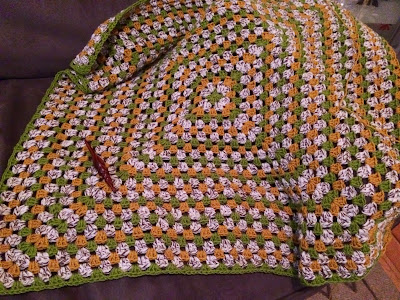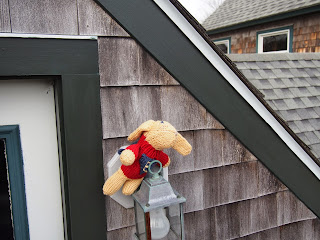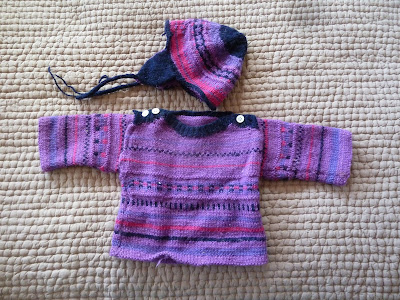Gentle knitters,
I must do some catch-up here for there's been a lot of traveling in my recent past and scant time to post. Apologies, because as usual Life trumps Writing. However, you may recall my exhortation to knit something on Knit Something Day (the 29th of November) in lieu of mindless consumerist Black Friday bingeing, and several of you sent photos of your post-Thanksgiving Day efforts, which may be enjoyed below.
 |
| Joan W. of Weston, MA, knitted this vase from a Classic Elite pattern. |
 |
| Preparing to reknit the sleeve; a minor adjustment. |
Neuroknitter decided to re-knit part of a sweater on Knit Something Day.
She made a sweater a few years ago that she wore so often, the sleeves stretched out because they were too long and "I felt like they were dragging the rest of the sweater off my shoulder." Her further explanations are the photo captions.
 |
| Old and new sleeve (new on top), a minor adjustment. |
 |
| Unseemly seam. |
 |
| Voila! A better seam! |
 |
| Detail: Brownie, Neuroknitter's invaluable assistant, steadies the garment as N finishes with mattress-stitch seaming. |
***
 |
| Susie B., of NYC, finished this gorgeous bobble-decorated sweater for a toddler. It took her a year to knit, but she started before the child could walk. |
 |
| Deborah N. of Providence, RI, designed and finished a cowl "for a beloved niece, in a beloved yarn that is now, maddeningly, no more--Ecologie Wool from Nashua." |
I knitted Superbunny, loosely based on this free pattern from Lion Brand Yarn, adding cape, insignia (with E, the initial of the person with whom he now lives), in Vanna's Choice Cotton Ease (the red sweater) and Classic Elite Bamboo (the rest).
***
 |
| Zontee H. of Brooklyn, NY, crocheted this afghan for an ailing friend. What could be more comforting? |
and last but not least is this witty sweater from upcoming Rhode Island designer, Casapinka:
 |
| You can find Casapinka's designs on her blog, through Ravelry, Etsy, or at Knit One Quilt Two in Barrington, RI. |
***
Well, that's all that showed up in my Inbox on the post-Thanksgiving weekend. My gratitude to those who contributed, and I hope more of you send me images next year. Meanwhile I've been obsessively busy with finishing, socks, and Mr. Max, my new grandson, who arrived on December 3rd.
 |
| Maxwell David, current and future recipient of many handknits. |
Having just returned from an emotional introductory meeting in Los Angeles (he cried A LOT), I can assure you only l'amour d'une grande-mère could compel me to fly a 6,000 mile round trip and drive, aided solely by I-phone GPS, the harrowing freeways of that eternally strange city. On the way back, such are the inevitable, expected, and unprotested longueurs of air travel, that I began a top-down sock in the LA airport, and made it to an inch or so past the heel-turn before deplaning in Providence.
Plus, on this long flight (and I sat next to Murray, a Golden Doodle therapy pet, but that is another story...of the shaggy dog genre) I could knit only by holding my arms very close to my body or extended before me in a weirdly strained position. Is that knitting dedication or what?
 |
| Alfie did not appreciate my interrupting his nap for a photo shoot of the LAX sock. |
Till the next time, may your holiday celebrations be serene, peaceful, and knit-worthy.






































